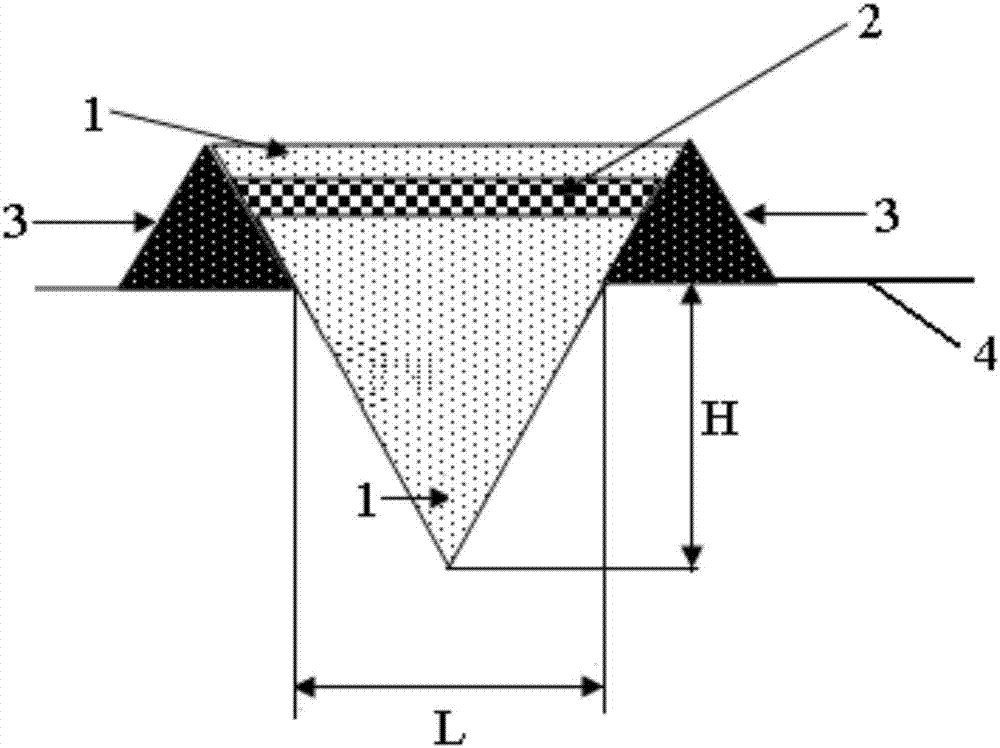Method for recovering Puccinellia distans and Puccinellia tenuiflora in saline and alkaline land
It is a technology of S. chinensis and saline-alkali land, which is applied in the fields of soil preparation methods, botany equipment and methods, agricultural machinery and implements, etc. It can solve the problems of restricting large-scale promotion and application, the decline of groundwater level, and the depletion of water resources, etc., and achieve economic benefits in the later stage Appreciable, Humidity-Increasing, Inexpensive Effects
- Summary
- Abstract
- Description
- Claims
- Application Information
AI Technical Summary
Problems solved by technology
Method used
Image
Examples
specific Embodiment approach 1
[0027] Specific embodiment one: this embodiment is a kind of method for recovering S. chinensis and S. florida in saline-alkali land, specifically according to the following steps:
[0028] One, use a plow to dig a plurality of ditches in parallel in the saline-alkali soil, and the saline-alkali soil dug out from the ditch is evenly piled up on both sides of the ditch to form a saline-alkali soil isosceles triangle; the section of the ditch is an inverted isosceles triangle, and the ditch The width L at the horizontal plane is 5cm-15cm, and the depth H of the ditch is 5cm-15cm;
[0029] Two, wind-sand soil is applied in the ditch that step 1 is opened to the highest point contour of the saline-alkali soil isosceles triangle in step 1 to the highest point of wind-sand soil;
[0030] 3. Use a seeder to apply the seeds of S. chinensis or the seeds of S. chinensis to the sandy soil in the ditch of step 2. The application amount of S. seeds or S. sylvestris seeds is 20kg~40kg / ha sa...
specific Embodiment approach 2
[0032] Embodiment 2: The differences between this embodiment and Embodiment 1 are: in Step 1, the width L at the horizontal plane of the ditch is 5 cm, and the depth H of the ditch is 5 cm. Others are the same as the first embodiment.
specific Embodiment approach 3
[0033] Embodiment 3: The difference between this embodiment and Embodiment 1 is that in step 1, the width L of the ditch at the horizontal plane is 10 cm, and the depth H of the ditch is 10 cm. Others are the same as the first embodiment.
PUM
 Login to View More
Login to View More Abstract
Description
Claims
Application Information
 Login to View More
Login to View More - R&D
- Intellectual Property
- Life Sciences
- Materials
- Tech Scout
- Unparalleled Data Quality
- Higher Quality Content
- 60% Fewer Hallucinations
Browse by: Latest US Patents, China's latest patents, Technical Efficacy Thesaurus, Application Domain, Technology Topic, Popular Technical Reports.
© 2025 PatSnap. All rights reserved.Legal|Privacy policy|Modern Slavery Act Transparency Statement|Sitemap|About US| Contact US: help@patsnap.com

